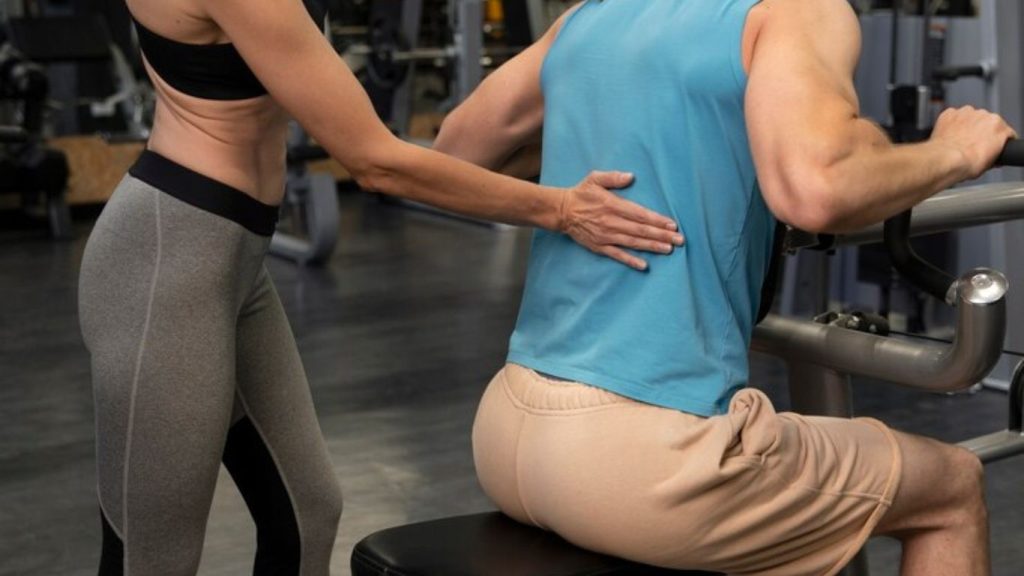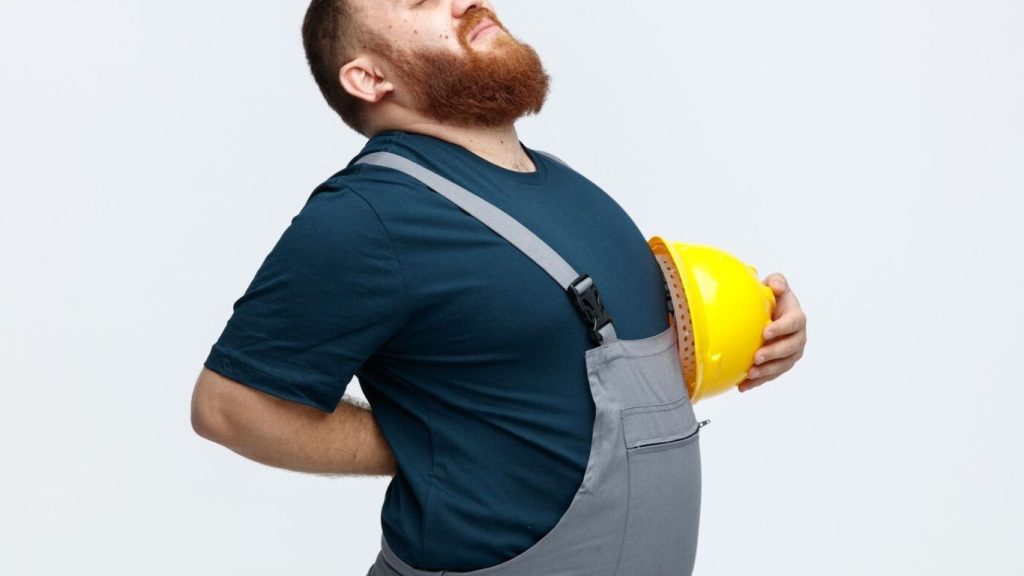Key Takeaways
- Form is everything—keep your back straight, chest up, and core engaged when lifting.
- Always warm up with dynamic stretches and lighter weights before heavy sets.
- Use your legs and hips, not your lower back, to drive the movement.
- Don’t ignore your core muscles—a strong core stabilizes your spine and reduces injury risk.
- Gradually increase weight instead of making sudden jumps, and rest if you feel strain.
- Supportive gear like weightlifting belts can help, but they’re not a substitute for proper form.
To prevent lower back pain when lifting weights, focus on proper form: keep your back straight, core tight, and lift with your legs instead of your spine. Warm up with light movements and stretches before heavy lifting, and increase weights gradually to avoid unnecessary strain. Strengthening your core and using controlled, steady movements also protect the lower back. If pain persists despite good technique, consider lowering the weight or consulting a trainer to correct your form.
Lifting weights is a popular and effective way to build muscle, increase strength, and improve overall fitness. However, one of the common pitfalls of weight lifting, especially for beginners and sometimes even for seasoned lifters, is lower back pain. When not addressed, this can lead to chronic issues and limit one’s ability to continue with strength training.
This article delves deep into how to prevent lower back pain when lifting weights, ensuring you get the most out of your workouts without compromising your spine’s health.

Understand the Anatomy of the Lower Back
The lumbar region, commonly referred to as the lower back, comprises five vertebrae (L1-L5). These vertebrae carry the weight of the upper body and are involved in many of our daily movements, making them susceptible to injury, especially when lifting weights.
Warm-Up Adequately
Jumping straight into heavy lifting without prepping your body is a recipe for injury.
- Dynamic Stretching: Incorporate movements that mimic the weight lifting you’ll be doing. For instance, if you’re going to do deadlifts, bodyweight squats can be an excellent warm-up.
- Cardio: A 5-10 minute brisk walk or jog increases blood flow to the muscles, prepping them for the workout ahead.

Maintain Proper Form
Bad form is a primary culprit behind weightlifting injuries, especially in the lower back.
- Neutral Spine: Whether you’re squatting, deadlifting, or pressing, maintaining a neutral spine is crucial. This means avoiding excessive arching or rounding of the back.
- Engage the Core: Before lifting, brace your core as if preparing to take a punch. This provides additional support to the lower back.
- Hip Hinge: For exercises like deadlifts or bent-over rows, initiate the movement from the hips, pushing them back, rather than bending from the waist.
Strengthen the Core
A robust core provides essential support to the lower back, acting as a protective belt.
- Planks: Instead of just focusing on the duration, ensure your form is impeccable. Engage the glutes and abs tightly.
- Hollow Body Holds: This gymnastics move is excellent for the anterior core, teaching you to press your lower back into the ground.
Mind Your Footwear
What you wear on your feet can impact your lifting biomechanics.
- Flat Soles: Especially for deadlifts and squats, shoes with a flat sole (like Converse) can be more effective than cushioned running shoes. They offer a stable base and ensure force is evenly distributed.
- Weightlifting Shoes: These have a raised heel, ideal for individuals with ankle mobility issues during squats.
Limit Lumbar Hyperextension
While a little arch in the lower back is natural, excessive arching (hyperextension) can put undue pressure on the lumbar vertebrae.
- Awareness: Regularly check your form in the mirror or film yourself to keep an eye on excessive arching.
- Tighten the Glutes: Activating the glutes can help in reducing excessive lumbar curvature.
Read Also : How to Stop Bleeding When On Blood Thinners

Diversify Your Exercises
Avoid doing the same set of exercises repeatedly. Introduce variations to ensure balanced muscle development and reduce the risk of overuse injuries.
Listen to Your Body
Pain is the body’s way of signaling something is wrong. A mild discomfort might be part of muscle development, but sharp or persistent pain, especially in the back, is a red flag.
- Rest: If you experience pain, it might be beneficial to rest and recover before hitting the weights again.
- Consultation: Seek guidance from fitness professionals or physiotherapists if you’re unsure about your form or if pain persists.
Incorporate Flexibility Work
Tight hamstrings or hip flexors can influence your posture and put more strain on the lower back.
- Stretching: Regularly stretch post-workout when your muscles are warm. Focus on the lower body muscles and the lower back itself.
- Yoga: Incorporates both strength and flexibility, helping in maintaining a strong and supple back.
Gradually Increase Weight
Progressive overload is essential for muscle growth, but the keyword is ‘progressive’. Don’t rush. Gradually increase weights, ensuring you maintain proper form.

Conclusion
Weightlifting is immensely beneficial, but like all physical activities, it comes with its set of risks. By adopting the strategies above, you can significantly minimize the risk of lower back pain and ensure that your strength training journey is both productive and pain-free. Remember, it’s not about how much you lift, but how well you lift. Proper form and mindful practices will take you a long way in safeguarding your spine and optimizing your gains.
Frequently Ask Questions
The lumbar region carries the weight of the upper body and is involved in many movements, making it susceptible to injury, especially when lifting weights without proper form.
Warming up increases blood flow to the muscles and prepares the body for strenuous activity, reducing the risk of strains or sprains.
A neutral spine ensures the natural curvature of the back is maintained, distributing weight and pressure evenly, thereby reducing the risk of injury.
Engaging the core provides support to the lower back, acting as a protective belt, especially during weight-bearing exercises.
Yes, shoes with a flat sole offer a stable base, ensuring force is evenly distributed, while cushioned shoes might lead to instability during lifts, indirectly putting strain on the lower back.
Excessive arching or hyperextension can put undue pressure on the lumbar vertebrae, leading to discomfort or injury.
Using varied exercises ensures balanced muscle development and reduces the risk of overuse injuries, which can strain the lower back.
It’s essential to stop the activity, rest, and if the pain persists, consult a healthcare or fitness professional to evaluate the situation.
Flexibility exercises, like stretching or yoga, can release tight muscles that might pull on the lower back and contribute to poor posture or form during lifts.
Yes, with proper form, gradual progression, and adherence to safety protocols, lifting heavy weights can be done without compromising the lower back’s health.
Remember, while weightlifting is beneficial for building strength and muscle, it’s imperative to prioritize safety and proper form to prevent injuries, especially in vulnerable areas like the lower back.

[…] Read Also : How to Prevent Lower Back Pain When Lifting Weights […]